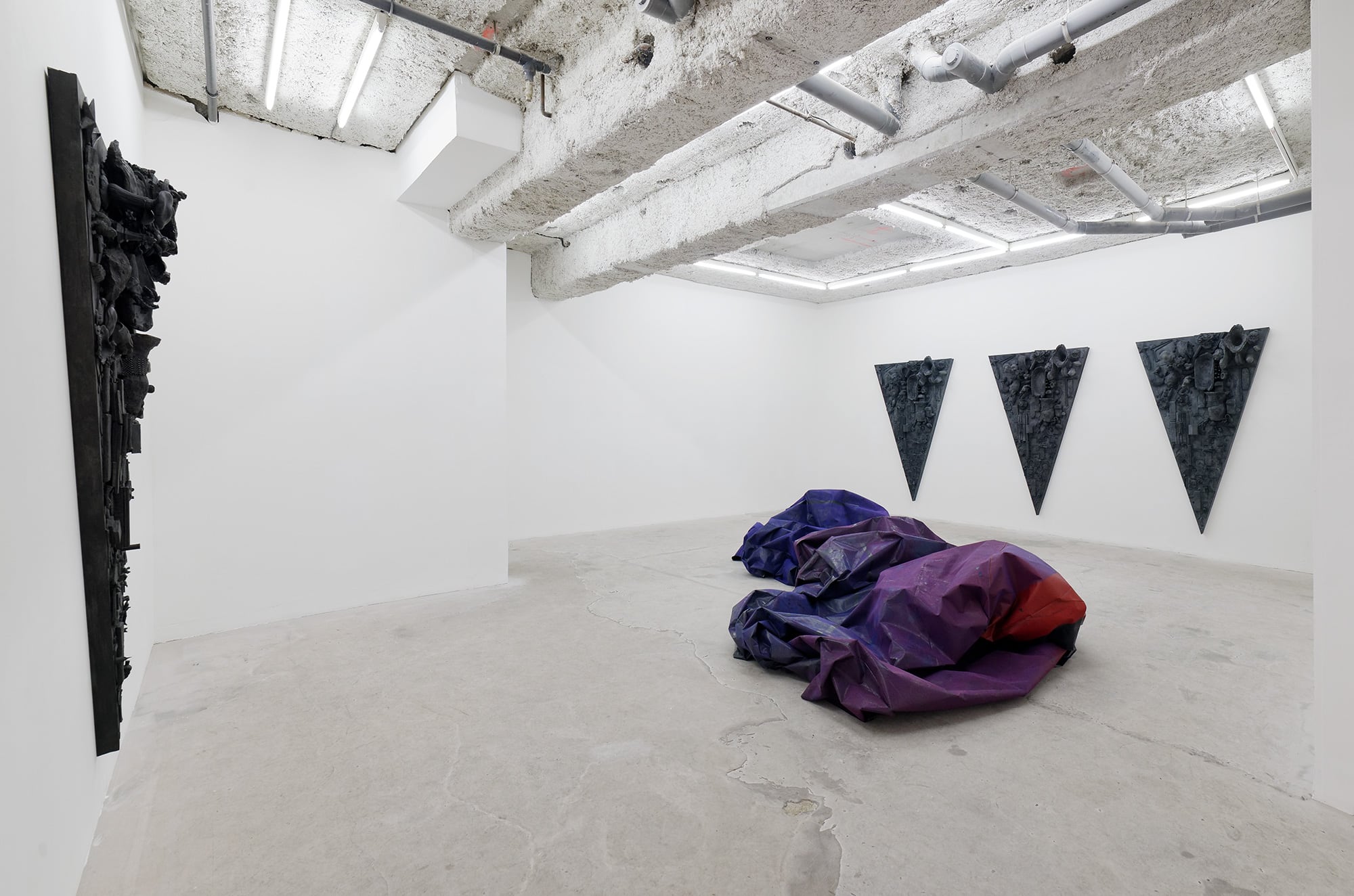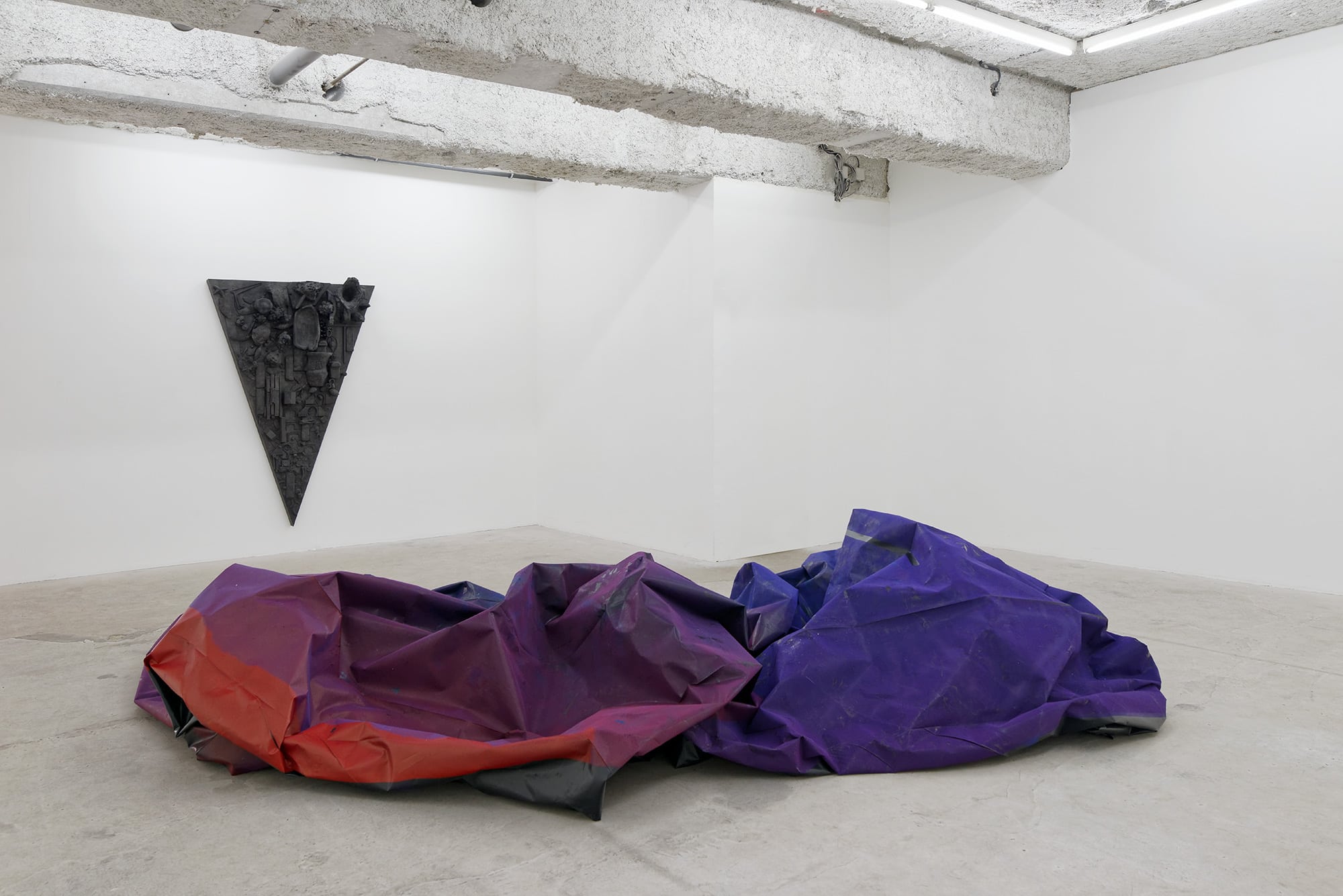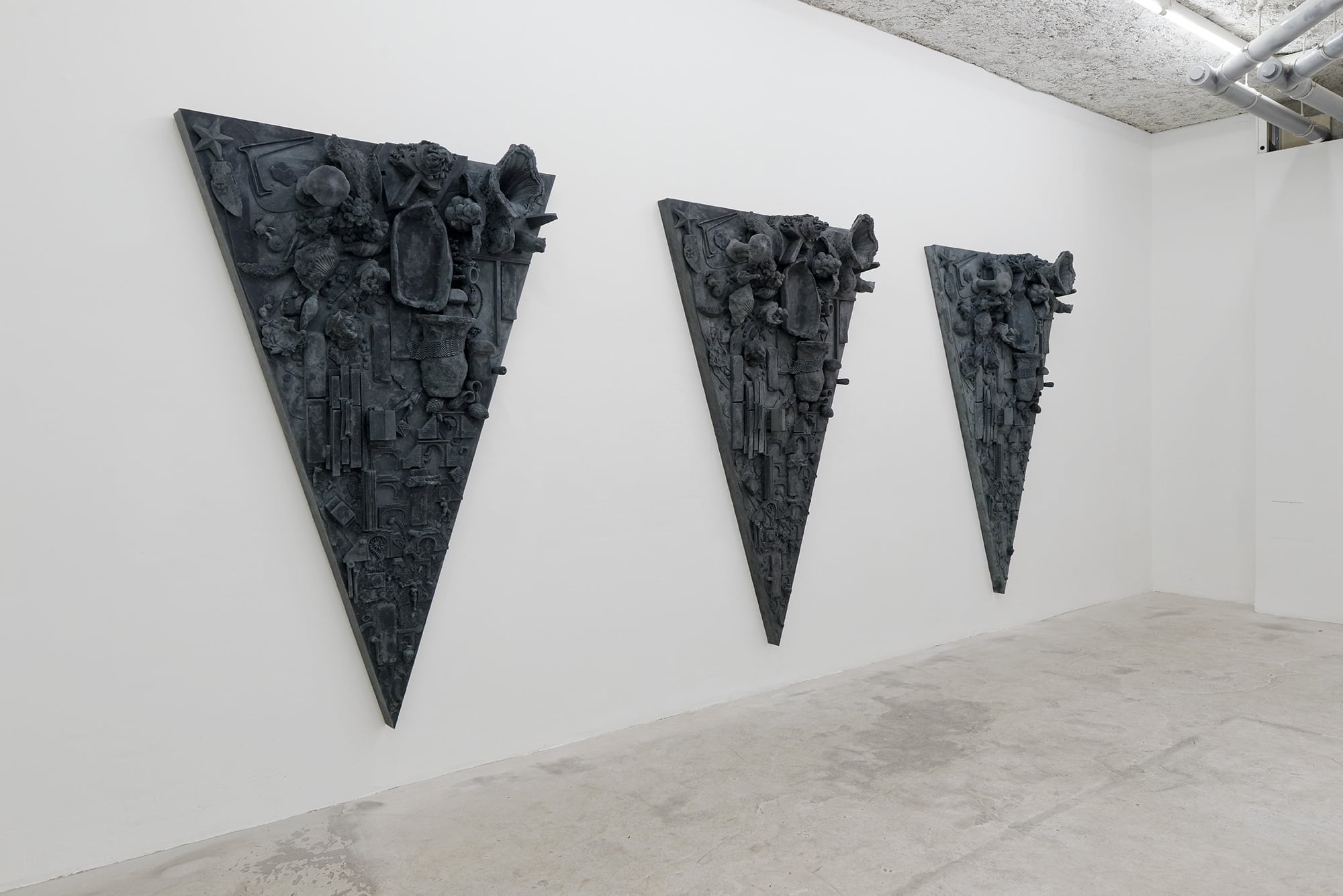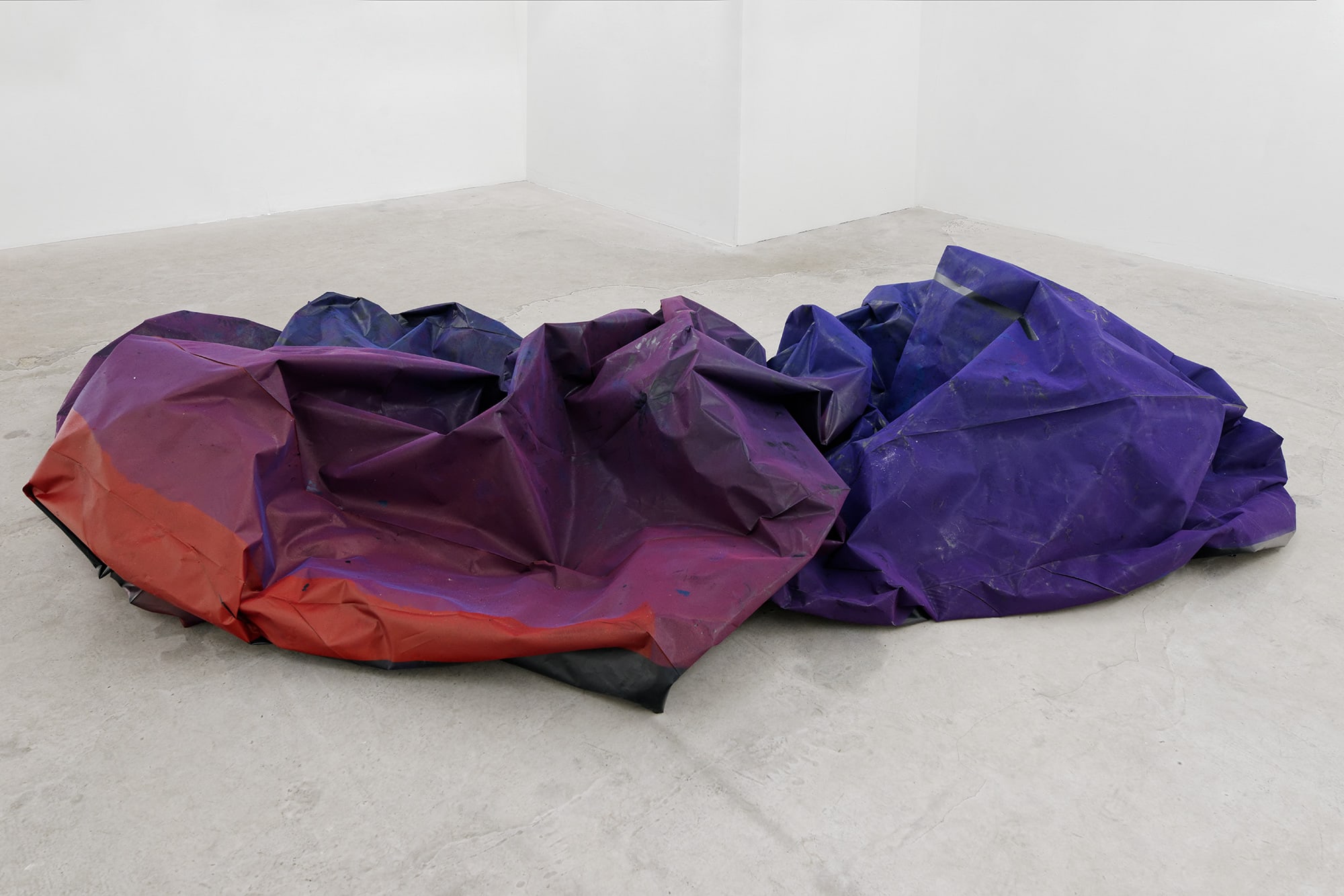 Overview
Overview
 Normal View
Normal View
 2016
2016
- 2009
- 2011
- 2012
- 2013
- 2014
- 2015
- 2016
- 2017
- 2018
- 2019
- 2021
- 2022
- 2023
- Clear
 Overview
Overview Normal View
Normal View 2016
2016






Galerie Balice Hertling
47 Bis Rue Ramponeau
75020 Paris
France
Galerie Balice Hertling is very pleased to announce an exhibition of new works by Isabelle Cornaro, featuring a new body of wall-based cast reliefs and a floor-based intervention. The show highlights Cornaro’s abiding interest in objects that answer the calls of both form and formlessness, as well as her longstanding curiosity about how material things are classified according to language- and image-based systems. In this sense her subjects are the aesthetic function itself––that is, the impulse to generate meaning through formal comparisons of similarity and difference––and the permeable, ever-shifting boundary between what is familiar and what is not.
The five reliefs that provide a major focal point in this exhibition are the latest in an ongoing series of works, entitled Homonymes, in which Cornaro uses various materials (here Acrystal, a type of Hydrocal cement) to cast accumulations of pre-existing objects as a single form. Unlike previous Homonyme reliefs the new examples are characterized by their overall triangular shape, which lends them a sharply identifiable silhouette when viewed from afar. They deliver an altogether different emotional charge, however, as the viewer approaches and their basic geometry reveals itself to be an envelope for a cascade of visually and culturally fraught forms that include disembodied fragments of figurines and other statuary; trinkets, coins, jewelry, and bits of decoration; miniature architectural elements; and discarded pieces of material whose original function is unclear.
Each of the Homonymes in this exhibition has been cast from the same mold. Their forms are therefore more or less identical, though their pigmentation subtly diffentiates them (three are black and two are dark grey). Cornaro therefore sets up a new system of relation: the repetition of forms acts like the sculptural equivalent of white noise, cancelling out any particular histories associated with the found objects from which they are made, and rendering mute those narratives external to the exhibition and the artworks themselves. As a result, the pathos of prior ownership and foregone use, like the issue of taste, can be seen as generalized conditions that haunt every object in a civilization like our own, in which a constant urge for forward progress also generates the persistent compulsion to leave things behind. History, from this point of view, is the linear accumulation of experience only inasmuch as it is also a ceaseless act of forgetting.
The Homonymes embody a contemporary version of a longstanding paradox: the closer we get to the objects that surround us, the more fully we understand their origins and purposes, the more abstract, formless, and even strange they appear to be. This is akin to the kind of perceptual shift that takes place in cinema when a wide angle shot gives way to a close-up. (Indeed, a direct link can be established between the Homonymes and Cornaro’s film works that also play an important role in her practice.) That they also recall the textures of 16th and 17th century grottoes is no accident, given that the exaggerated forms which characterize those Mannerist environments only emerged after artists had already developed newly precise methods of sculptural reproduction––in effect, being able to copy the real initiated a movement away from the real. Similarly, the specificity of the forms in the Homonymes, rendered using a fluid material that later solidifies, portends the necessary return to a state of formlessness that all things, living and inanimate, must eventually undergo.
This backdrop of dissolution assumes the spotlight in the floor-based installation that provides the exhibition with its weightless center of gravity. Consisting of folded and creased sheets of plastic covered in luminous, particulate fields of spray-paint, the work is provocatively shapeless, an exercise in anti-form. Since the plastic is a kind of film, Cornaro’s moving image work once again comes to mind, but it is in fact a byproduct from the making of wall paintings, yet another facet of her practice: the plastic sheets are originally used to mask off and protect sections of the exhibition spaces in which these site-specific works are installed. An inadvertent, aleatory composition is created when paint that exceeds the intended limits of the wall painting lands on the plastic, which in turn provides a record of what was not intended to be included in the work itself. By repurposing the plastic here, Cornaro grants new life to the remains of a process whose first iteration has ended, reminding us that objects often express their purposes only after they have been cast aside.
–Stuart Krimko